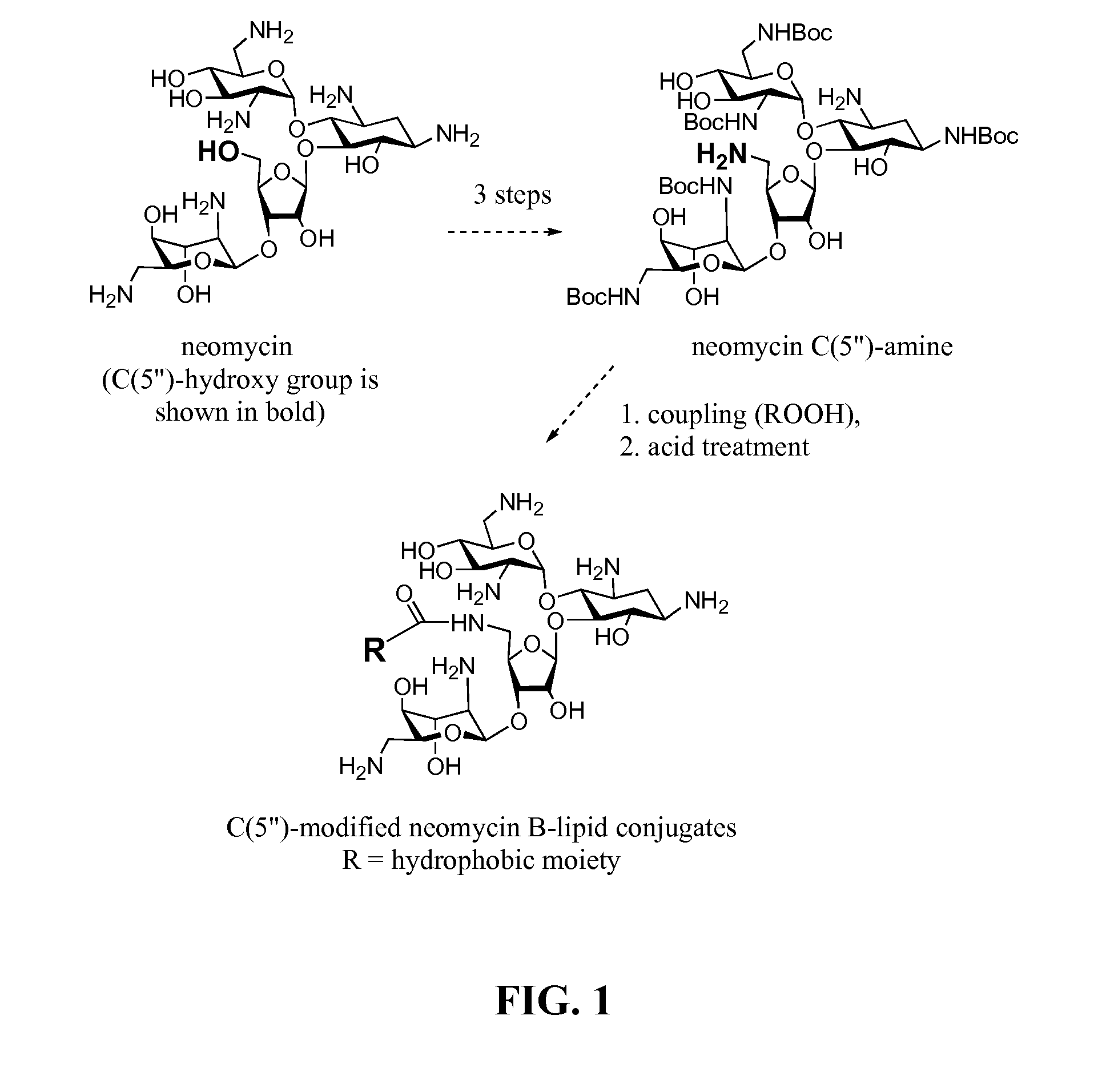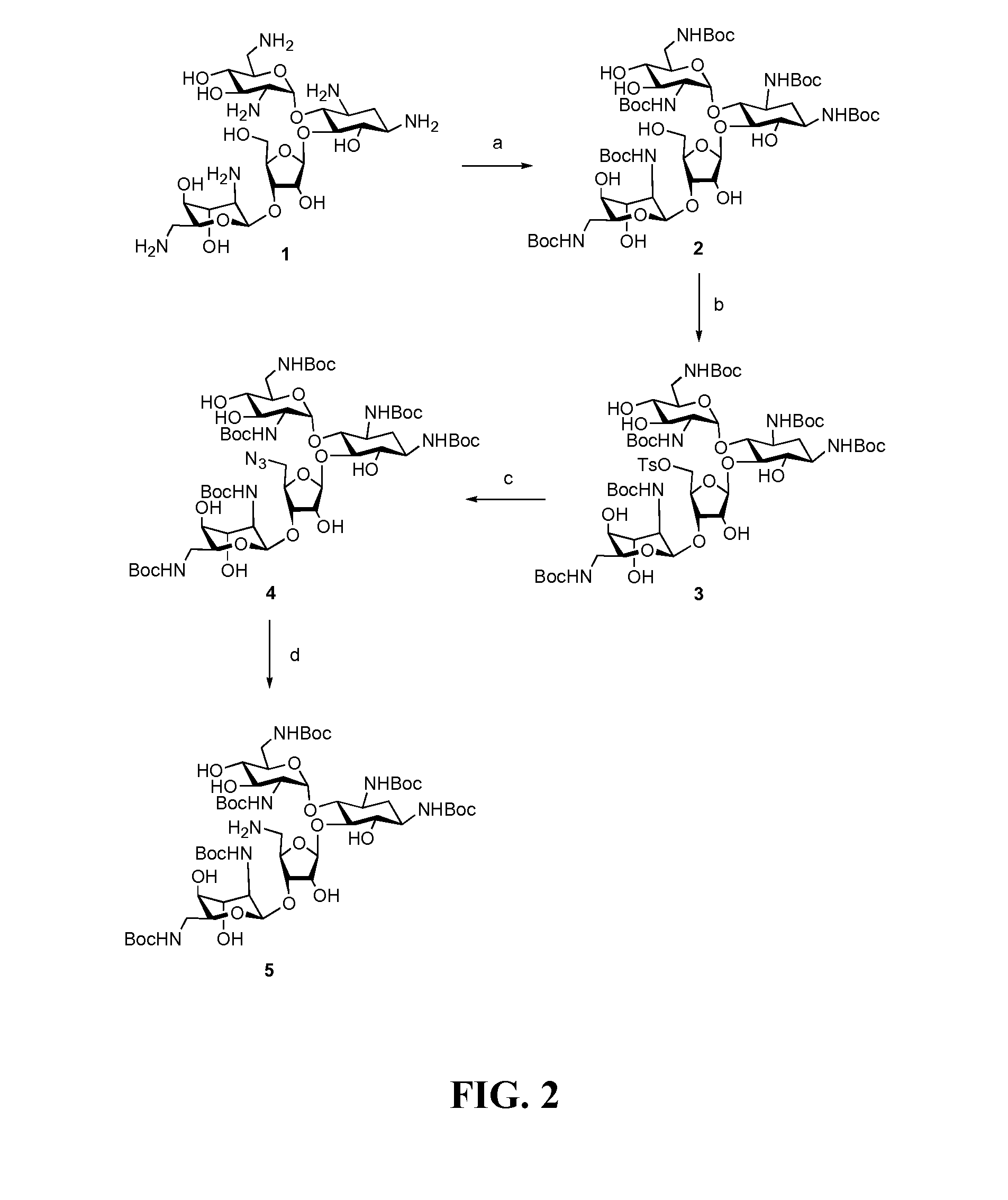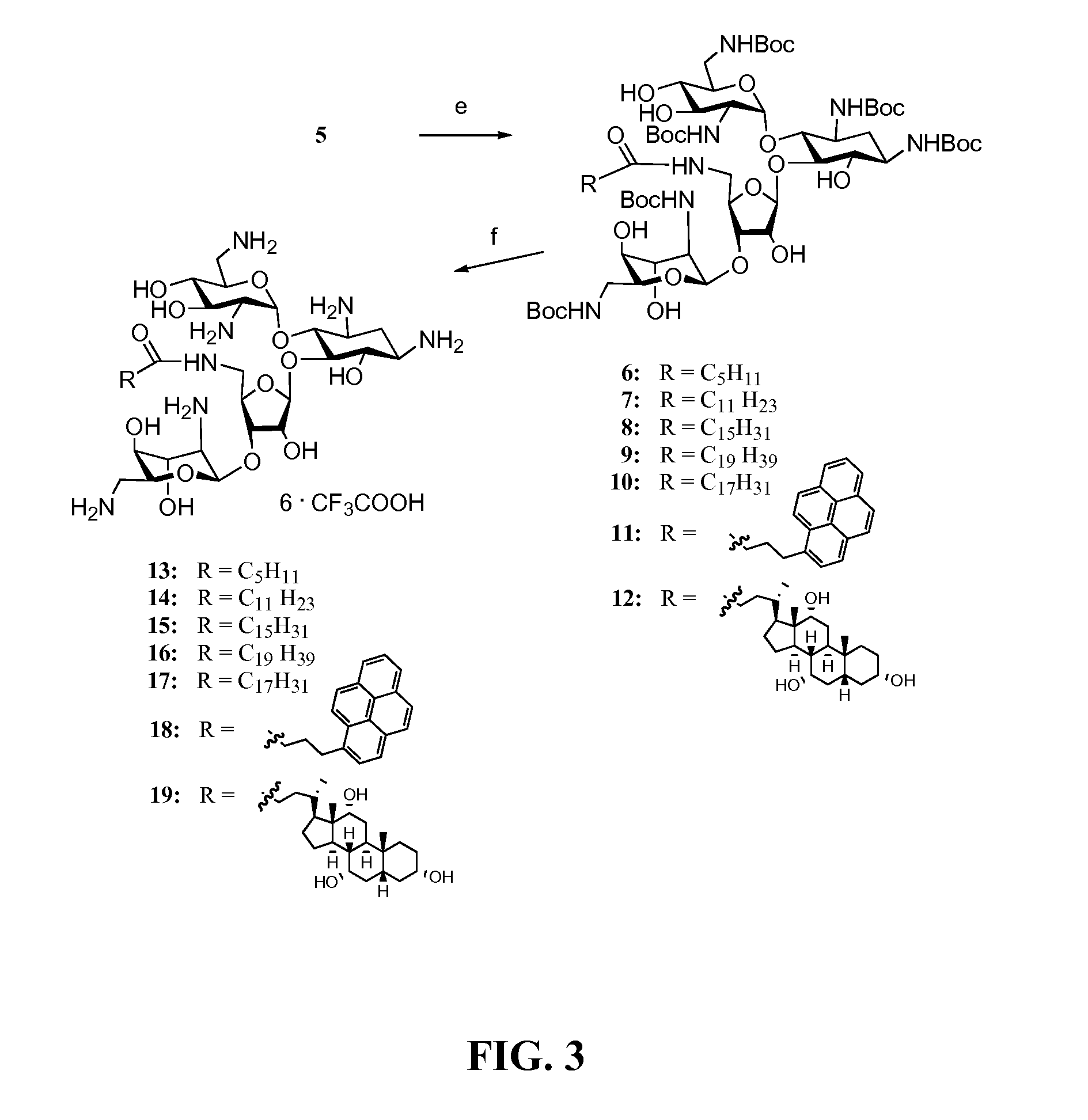Hydrophobically enhanced aminoglycosides
a technology of aminoglycosides and hydrophobic enhancement, which is applied in the field of preparation of hydrophobic enhanced aminoglycosides, can solve the problems of affecting the antibacterial effect of the enzyme, affecting the antibacterial effect, so as to improve the antibacterial activity, and improve the antibacterial
- Summary
- Abstract
- Description
- Claims
- Application Information
AI Technical Summary
Benefits of technology
Problems solved by technology
Method used
Image
Examples
example 1
Synthetic Preparation of Certain Neomycin-Lipid Conjugates of the Present Invention
[0143]Readily available neomycin sulfate was converted into salt free neomycin 1 via ionic exchange. The amino functions were protected as carbamate 2 by treatment with (BOC)2O in DMF-water mixture as previously described (Michael et al., 1999; Kirk et al., 2000). The primary hydroxyl group at the C5″-position was selectively tosylated by treatment of 2 with p-toluenesulfonyl chloride in neat pyridine affording mono-tosylated compound 3 in 81% yield (Scheme 1, FIG. 2). Nucleophilic displacement of tosyl-derivative 3 using sodium azide in DMF at 80° C. produced azide 4 (Disney and Barrett, 2007) which was subjected to catalytic hydrogenation using Pearlman's catalyst (Pd(OH)2 / H2 / C) to provide partially protected 5″-NH2 neomycin analog 5 (Scheme 1, FIG. 2).
[0144]Amine 5 served as a precursor for conjugation to lipophilic acids (Scheme 2, FIG. 3). The inventors selected a variety of acids including satur...
example 2
Characterization Data and Additional Synthetic Methods Regarding Certain Hydrophobically Enhanced Aminoglycoside Antibiotics
Methods
[0146]NMR spectra were recorded on a Brucker Avance 300 spectrometer (300 MHz for 1H NMR, 75 MHz for 13C). Optical rotation was measured with a Perkin-Elmer polarimeter (accuracy 0.002°). GC-MS analyses were performed on a Perkin-Elmer Turbomass—Autosystem XL; alternatively, mass spectra were recorded on a Linear Ion trap (LTQ)-Thermo-Finnigan spectrometer. Analytical thin-layer chromatography was performed on precoated silica gel plates. Visualization was performed by ultraviolet light and / or by staining with ninhydrin solution in ethanol. Chromatographic separations were performed on a silica gel column by flash chromatography (Kiesel gel 40, 0.040-0.063 mm; Merck). Yields are given after purification, unless differently stated. When reactions were performed under anhydrous conditions, the mixtures were maintained under nitrogen.
Characterizations and A...
example 3
Antibacterial Testing of Certain Hydrophobically Enhanced Aminoglycoside Antibiotics of the Present Invention
Methods
[0176]Standard reference antibiotic susceptibility testing methods (NCCLS[CLS] (Clinical and Laboratory Standards Institute, 2006)) agar or dilutional methods was used to assess the activity of all prepared antimicrobials. Compounds were tested against Gram-positive strains including S. aureus, methicillin-resistant S. aureus (MRSA), S. epidermidis, methicillin-resistant S. epidermidis (MRSE) and S. pneumoniae as well as Gram-negative strains E. coli, gentamycin resistant E. coli and P. aeruginosa. The minimum inhibitory concentrations (MIC) in μg / mL were determined and are shown in Table 1 (FIG. 4). Gentamycin and neomycin served as positive controls. MIC values defined as the lowest concentration of antimicrobial agent which inhibits the development of visible growth after 24 h at 37° C. was determined.
[0177]For those compounds whose numbers end in A: Microorganisms ...
PUM
| Property | Measurement | Unit |
|---|---|---|
| hydrophobe | aaaaa | aaaaa |
| spectrum of action | aaaaa | aaaaa |
| resistance | aaaaa | aaaaa |
Abstract
Description
Claims
Application Information
 Login to View More
Login to View More - R&D
- Intellectual Property
- Life Sciences
- Materials
- Tech Scout
- Unparalleled Data Quality
- Higher Quality Content
- 60% Fewer Hallucinations
Browse by: Latest US Patents, China's latest patents, Technical Efficacy Thesaurus, Application Domain, Technology Topic, Popular Technical Reports.
© 2025 PatSnap. All rights reserved.Legal|Privacy policy|Modern Slavery Act Transparency Statement|Sitemap|About US| Contact US: help@patsnap.com



